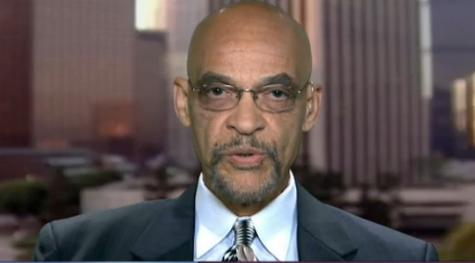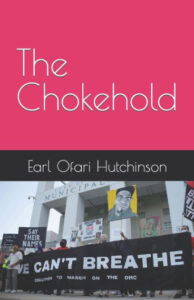Earl Ofari Hutchinson
This is the second in a two-part series on the chokehold from my new book The Chokehold (Middle Passage Press)
Within weeks after the George Floyd slaying in May 2020 the San Diego Police Department banned the use of the chokehold. Several prominent medical experts consulted reaffirmed that the chokehold was a lethal technique that could cause injury or death.
In the decades after Alfred Lyons in 1976 sought an injunction to bar the LAPD from using it, doctors and medical practitioners, criminologists, and scientists had frequently assessed the medical hazard of the technique.
There was no surprise that there was sharp division and debate over not only whether chokeholds wreak the physical damage claimed, but whether they could be used even with proper training to minimize injury. There was more debate over the attempt to make distinctions between the types of chokeholds used.
Some experts argue that there are different types of neck restraints in which breathing, and blood flow are not cut off or impaired. They supposedly did not cause major neck and throat injuries. The term “neck restraint” encompassed two types of compressions: strangleholds, which block blood flow to the brain through two pressure points on the neck, and chokeholds, which bar airflow through the windpipe.
However, while there is much hair-splitting on whether with the right training and a benign grip, no injury or harm will result, there is no debate that a carotid chokehold that cuts off breath by applying force to the throat or windpipe can maim or kill.
The Justice Department and the American Academy of Neurology in 2021 conducted a rigorous study of the medical hazards of the carotid restraint. They were emphatic. The choke grip is “inherently dangerous.” They added that the hold that results in loss of oxygen or blood flow could cause permanent injury to the brain, including stroke, cognitive disability,
or death. A lack of training using the grip could increase the likelihood of death.
The Academy flatly called on law enforcement to classify “neck restraints, at a minimum, as a form of deadly force.” It added, “There is no amount of training or method of application of neck restraints that can mitigate the risk of death or permanent profound neurologic damage with this maneuver.”
In other words, the tactic should be banned totally. The Academy, significantly, did not try to find any gray area in the use of the chokehold. It did not soften the danger of the hold. For the Academy, no amount of expert training or applying a benign grip could avoid the risk of injury.
A team of Boston neurologists came to the same conclusion. In December 2020, they published their findings in the Journal of the American Medical Association. Jillian Berkman, one of the neurologists involved in the study was specific, “The whole importance of the blood flow itself is that the blood is what’s carrying the oxygen, so if you’re not getting blood up to the brain, you’re not getting oxygen to the brain.” Berkman added, “The end result could still be the same as when you’re choking someone. Both chokeholds and strangleholds have the potential to be deadly.”
The researchers pointed out that the brain requires fifteen to twenty percent of the blood in circulation to properly function, and this blood predominately travels through the two carotid arteries—both of which are
blocked during strangleholds. This interruption can cause multiple medical malfunctions, including seizures, strokes, arrhythmias, and vascular damage.
The most important finding in the studies of the effect of a chokehold was that a person could die from it in a matter of moments. In fact, it could be seconds, four seconds to be exact. That was the case with Garner. It took barely one minute for the hold to trigger his death. In the case of Floyd, the eight minutes and forty-six seconds he was choked was an incredible one hundred times longer than what is necessary to make a victim lose consciousness.
The detailed studies conducted by medical personnel on the damage caused by chokeholds were conclusive enough for President Biden. On the second anniversary of the chokehold slaying of Floyd, in May 2022, he signed an executive order banning the chokehold by federal law enforcement. The only exception it could be used was when an officer’s life was in mortal danger.
Biden made clear the chokehold was one of the major causes of the chronic rancor between police and minority communities, “Police cannot fulfill their role to keep communities safe without public trust and confidence in law enforcement and the criminal justice system. Yet, there are places in America today where the bonds of trust are frayed or broken. To heal as a nation, we must acknowledge that fatal encounters with law enforcement have disproportionately involved Black and Brown people.”
Biden’s action on the chokehold was a case where political officials took heed of the advice from doctors, scientists, and medical experts about a lethal police technique that caused injury and death. They certainly got it right about a deadly tactic that maims and kills. The majority of those were Black and Hispanic men. This was a good step forward. But as many police reform advocates were quick to note only a step.
Earl Ofari Hutchinson is an author and political analyst. His forthcoming book is Reparations! (Middle Passage Press) He is the host of the weekly Earl Ofari Hutchinson Show on KPFK 90.7 FM Los Angeles and the Pacifica Network. He publishes thehutchinsonreport.net

